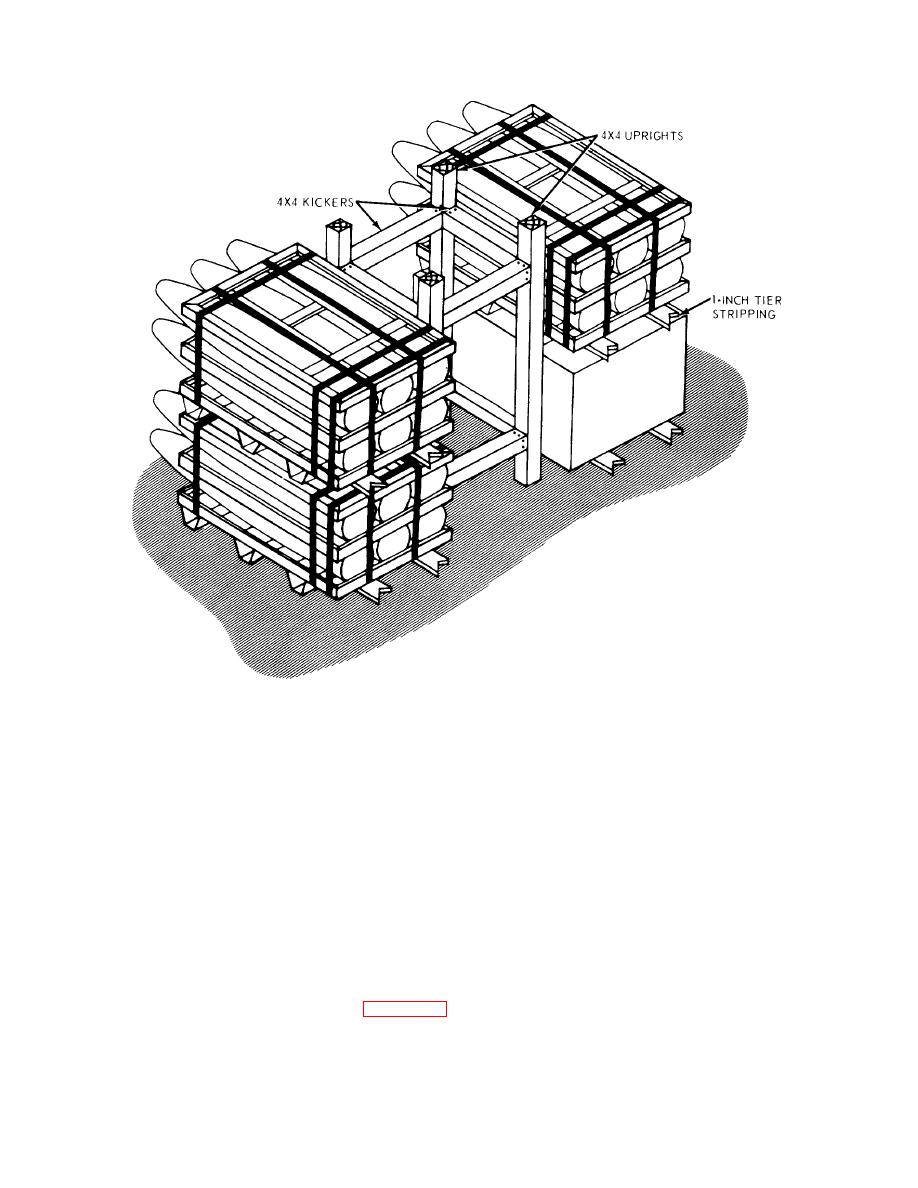
TM 55-607/NAVSEA OP 3221 Rev 2
Figure 8-21 Void shoring for unit loads that overhang the pallet.
8-4. Sweatboard-to-Sweatboard Stowage Technique
Sweatboard-to-sweatboard stowage utilizes the most space within a hold, but it also results in a greater number of small
voids than block stowage. These features become more pronounced in compartments with severe hull curvature, while
in areas approaching a rectangular shape the technique resembles block stowage. It should be noted that the increased
space utilization that the sweatboard-to-sweatboard stowage method provides in compartments with severe hull
curvature requires considerably more effort (in terms of manpower and time) then does a straight block stow. Use of
side-shifting forklifts is highly desirable to facilitate handling pallets in confined areas. Unlike block stowage, sweatboard-
to-sweatboard stowage should be arranged so that voids in one tier do not occur above or below those in the immediate
upper or lower tier but instead are staggered from tier to tier. It is important that voids be made to occur near the central
areas of the ship. Voids can be safely shored in various degrees, but the ship's master has the final say concerning the
manner in which the voids are dunnaged, and his decision will determine the extent of' shoring that blockers and bracers
will employ. The void-shoring techniques described in subsequent sections reflect the preferred methods currently in use
at shiploading activities employing the sweatboard-to-sweatboard stowage technique.
a. Regardless of the commodity or the configuration of the unit load, certain fundamentals common to each kind of
unit load should be strictly observed when sweatboard-to-sweatboard stowage is employed. Strip sheathing is fastened
over the sweatboards in the manner shown in figure 8-22. If the sheer angle is severe, two courses of 1- by 6-inch strips
or relatively short pieces of 2 by 6-inch strips may be used to sheath the sweatboards. Otherwise, long lengths of 2- by
6-inch strips are preferred in the holds where sheer is not a factor.
8-22


